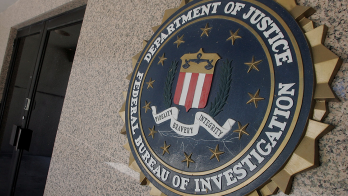Denver Health nurses gain big efficiencies redesigning Epic EHR workflow

Photo: Denver Health
Denver Health clinicians had been reporting there were multiple locations in their electronic health record to document distinct types of assessments, and that it was difficult to locate specific patient data because of inconsistencies.
THE PROBLEM
This was because of fragmented work done to define the documentation early in the Colorado health system's EHR journey. There was a lack of standardization in how to approach design work within the record and the general practice was to give the frontline clinical staff what they needed to appropriately provide care for the patient.
"Nursing had a low compliance with real-time documentation," said Renee J. Starr, RN-BC, nursing informatics specialist. "This could be partially attributed to a sense there were multiple locations to chart things in addition to the belief that documenting certain items was not 'actionable' or appeared to be for the sake of documenting rather than to influence the care of the patient.
"Nursing also was experiencing frequent alerts that were informational rather than actionable," she continued. "Alerts for administering medications too close together were configured with ranges that were inconsistent with organizational guidelines or best practices for medication administration."
Alerts with recommendations to notify providers that did not respect usual workflows often caused interruptions that led to frustration and irritability rather than improving patient care, she added.
PROPOSAL
The proposal to streamline EHR documentation included focusing on areas of documentation commonly used by nursing.
"Head-to-toe assessments are documented at a minimum once a shift and every four hours in the intensive care units," said Amy Fielding, RN-BC, RN informatics specialist. "The goal to optimize the body system assessments included defining the most efficient way to document (charting by exception) and creating standardized definitions for each body system.
"While each of these efforts were individually valuable to decrease the amount of time nursing spent documenting their work, these initiatives also were helpful in facilitating a campaign to encourage timely documentation."
Renee J. Starr, RN-BC, Denver Health
"In addition to standardizing the head-to-toe assessment, we also focused on documenting nursing interventions," she continued. "The nurse performs a wide variety of interventions throughout the shift that get documented (ambulation, repositioning, toileting, bathing, etc.). The biggest efficiency gain with this assessment was evaluating for duplication and redundancy."
The hypothesis was removing flowsheets and superfluous values would be possible without compromising the quality of documentation.
"The third area of documentation addressed was the nursing intake assessment for all admitted inpatients," she noted. "The assessment was long and required the nurse to scroll just to see all the questions that needed to be answered.
"The goal of this optimization was to only include actionable questions," she continued. "Sections with read only information – for example, vaccine history – while still important, should be moved to other areas in the EHR so the nurse can focus on questions that need to be immediately addressed."
Finally, optimizing alerts was examined. While the total amount of documentation time needed to address a best practice alert is small, the sheer number of alerts directed at nursing is significant.
"The goal was to ensure alerts are clinically relevant and actionable," Fielding explained. "Every time an interruptive alert displays, the nurse must change focus from the current task to address the alert.
"Bedside nursing already is a task-saturated and overstimulated environment," she said. "The goal is to keep the nurse focused on their patients and only interrupt their workflow when essential."
MARKETPLACE
There is a wide variety of electronic health record vendors on the market today, including Allscripts, athenahealth, Cerner, eClinicalWorks, Epic, Greenway Health, Medicomp Systems, Meditech, Medsphere Systems and NextGen Healthcare.
MEETING THE CHALLENGE
Working with a group of frontline clinicians, nursing informatics developed a working group to improve nursing documentation and workflows. The group developed a list of principles to direct the team’s discussions and guide priorities.
"The team wanted to record the care the patient received, asking that the bulk of effort toward documenting should focus on showing individualized care as opposed to documenting the 'normals' on every patient," Starr explained. "Options available for documentation should help to prompt the nurse at any experience level to provide safe and high-quality care.
"Bedside nursing already is a task-saturated and overstimulated environment. The goal is to keep the nurse focused on their patients and only interrupt their workflow when essential."
Amy Fielding, RN-BC, Denver Health
"We should meet regulatory requirements while focusing on usability and efficiency of work," she continued. "Another goal was to look at processes across the organization and standardize documentation practices as much as possible while making the information accessible across the continuum of care."
Partnering with the health system's Epic analysts to review usage data for individual flowsheet rows and values within those rows, staff were able to determine if a particular flowsheet row or options within the row were consistently used to document care. This approach allowed staff to inform the team's decisions and drive toward current usage without disrupting workflows.
"Looking to efficiency, informatics worked with our Epic partners to add tasks or alerts that included in-line documentation in the Epic Brain activity and best practice alerts," Starr said. "This helped to reduce interruptions and eliminated the need to move to a different location for documentation.
"While each of these efforts were individually valuable to decrease the amount of time nursing spent documenting their work, these initiatives also were helpful in facilitating a campaign to encourage timely documentation," she added.
RESULTS
Meticulous analysis of every single flowsheet and corresponding values, while tedious, paid off for the nurses.
"We removed 28 flowsheet rows and 123 flowsheet values in the intervention section of the EHR," Fielding reported. "The admission intake form saw 31 flowsheets and 80 flowsheet values moved or eliminated. By reducing the number of flowsheets and their content, we have decreased the time nurses need to spend on documentation and have seen a nearly 10% improvement across the house.
"This averages more than 10 minutes faster for documentation," she continued. "In addition to a decrease in time spent in the EHR, we also saw a 9.4% increase in timely documentation (documenting within 60 minutes of the assessment/intervention) from nursing (62.7% in October 2022 to 72.3% in May 2023)."
Reviewing every nurse-facing best practice alert proved to yield efficiency gains for the nurse.
"Over the course of two years, the number of best practice alerts for nursing went from more than 2.1 million (in Q2 of 2021) to 255,000 (in Q2 of 2023), an 86% reduction," she reported. "Additionally, the percentage of time nursing took a discrete action within the best practice alert increased 18% (8% in Q4 of 2022 to 26% in Q2 of 2023)."
ADVICE FOR OTHERS
"Our advice includes engaging nurses with varying levels of experience and a wide range of specialties," Fielding stated. "It was critical to have end users identify documentation pain points within the EHR. This helped the participants have a sense of ownership in the process and ensured that bedside nurses were heard by IT.
"This process then can be used to generate a list of areas to address and establish priorities based on feasibility and available resources," she continued. "Next, create clear rules on when a flowsheet should be kept or when it should be removed with your super users and leadership."
Then the fun begins, she said.
"Determine which flowsheet rows and values can be deleted," she explained. "Be sure to quantify the number of deletions so you can share the end results with nursing. Additionally, think about the reports or tools needed to illustrate the documentation improvements."
Follow Bill's HIT coverage on LinkedIn: Bill Siwicki
Email him: bsiwicki@himss.org
Healthcare IT News is a HIMSS Media publication.


























